Heat-loving plants are perfect for adding color to your container garden during the hot season. These plants tolerate high temperatures and require minimal maintenance, making them ideal for busy gardeners. By choosing the right plant combinations and providing proper care, you can create a stunning display of color and texture on your porch or patio. Remember to choose plants with similar watering needs and grow well in containers.
Ensure they have enough water, nutrients, and sunlight to keep them healthy. Don’t forget about overwintering your heat-loving plants if you live in a colder climate. They can survive the winter months with extra care and return even stronger next year. So, get creative with your container combos, experiment with different textures and colors, and enjoy the beauty of heat-loving plants all season.
Heat-Loving Plant Combos for Containers
Croton and Snake Plant
If you want a bold and exotic combination to add to your container garden, consider pairing the colorful croton with the easy-care Snake plant. Crotons are prized for their vibrant red, orange, yellow, and green foliage. They thrive in warm weather and bright light but can withstand shade. On the other hand, Snake plants are known for their tall upright leaves in various shades of green and yellow.
In case you missed it: Best Tips for Gardening in Extreme Heat
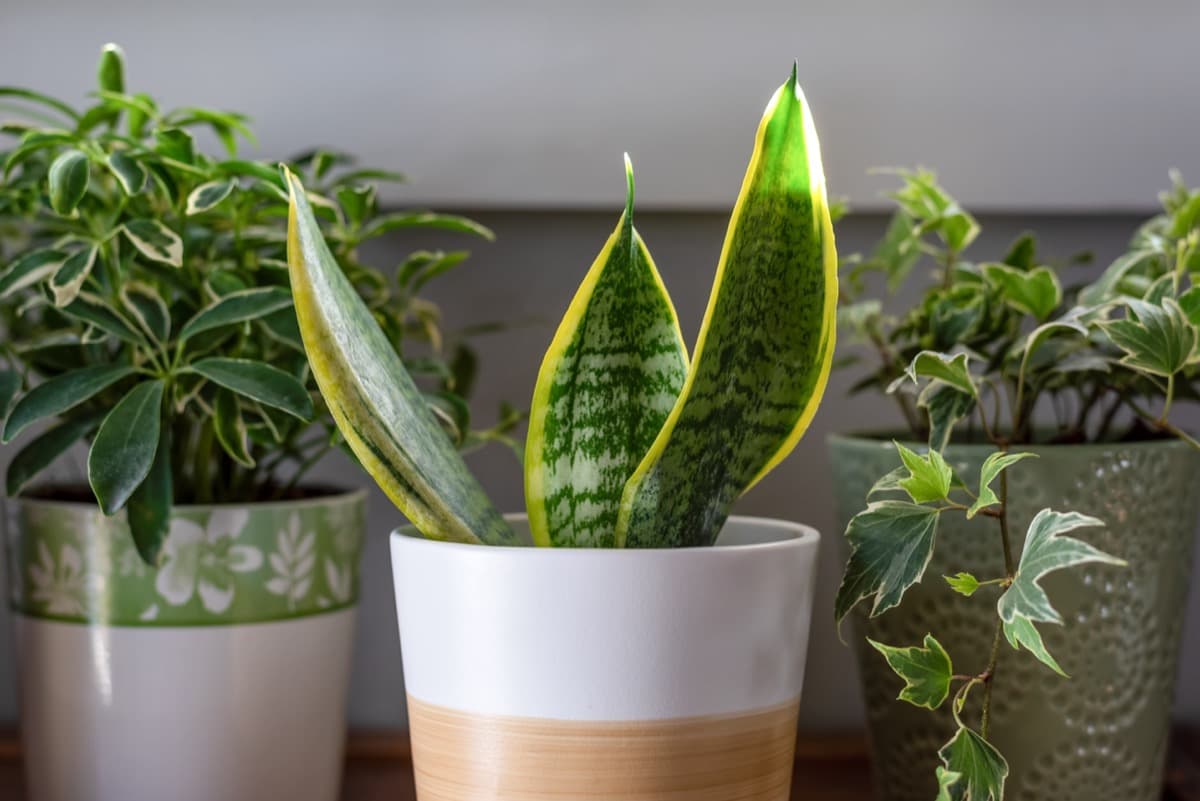
They are incredibly low-maintenance and perfect for busy gardeners. When planting these two together in a container, ensure they have similar soil requirements, as both prefer well-draining soil. Crotons need regular watering, while Snake plants prefer drier conditions, so be mindful not to water them over.
Lantana, Coleus, and Verbena
Lantana is a low-maintenance plant that loves the sun and can handle dry conditions. Coleus provides stunning foliage with its variegated leaves in different colors like green, pink, or purple depending on the variety. And then, Verbena adds a pop of color to the mix with its bright blooms in various hues ranging from white to deep purple.
In case you missed it: Growing Best Bromeliads Indoors: DIY Steps Explained
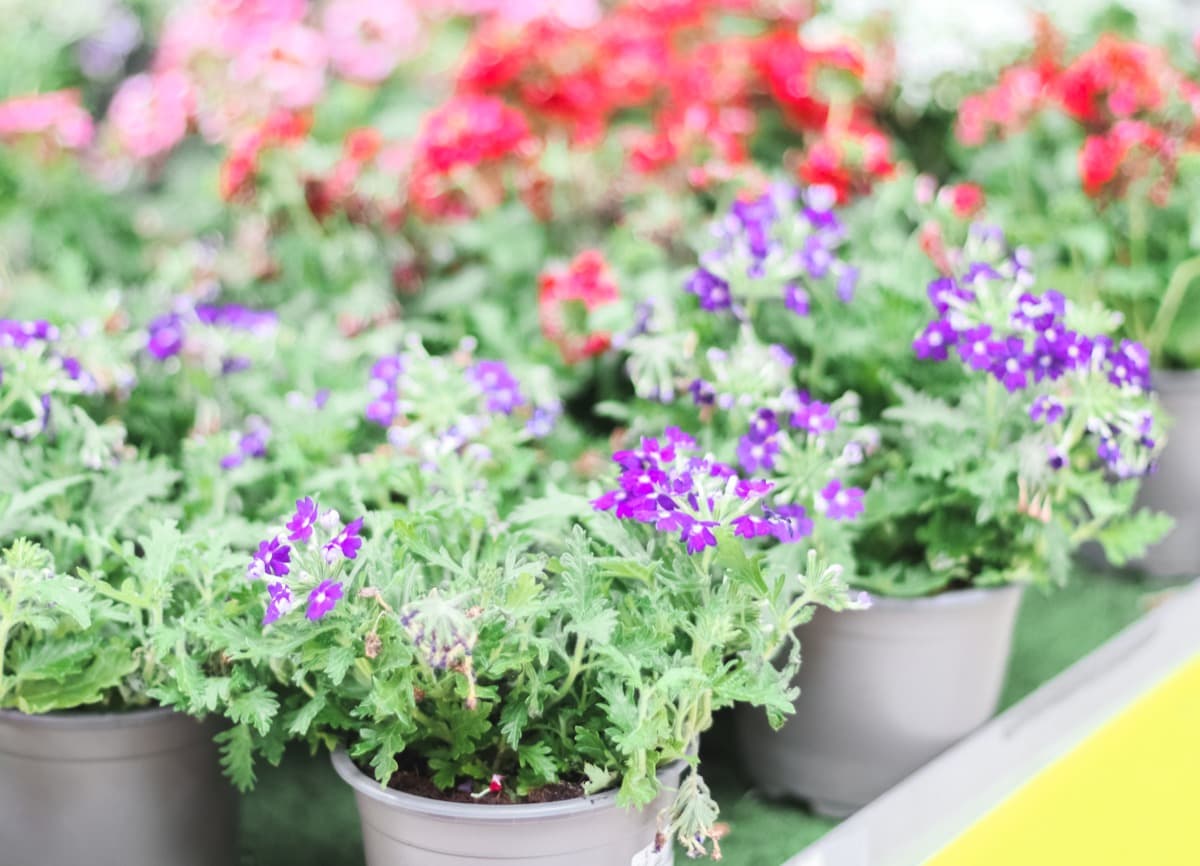
Together these three plants create an eye-catching display that will draw anyone’s attention. Regarding care requirements, all three plants thrive under similar temperature and sunlight conditions making it easy to maintain them together. Plus, they are generally resistant to pests and diseases, so you don’t have to worry much about their health.
Sedum, Echeveria, and Burro’s Tail
Sedum, Echeveria, and Burro’s Tail are great heat-loving plants that can be combined to create colorful and drought-tolerant container gardens. Sedums are succulent perennials with fleshy leaves in green, blue-gray, pink, and red shades. They can withstand hot temperatures and low water conditions, making them perfect for containers exposed to full sun. Echeverias are rosette-forming succulents with thick, waxy leaves in shades like gray-blue-green or purple-red.
They grow best in well-draining soil mixes under bright sunlight or filtered shade. Burro’s Tail is a trailing succulent with delicate stems covered by small round leaves resembling beads. When planted together in a container garden, Sedum adds texture, while Echeveria provides height variation. Burro’s Tail trails beautifully over the edges of the pot, creating a stunning cascading effect. This combination requires minimal maintenance as they all have similar watering requirements once every two weeks when soil becomes dry and do not need fertilization constantly.
Peppers, Tomatoes, Salvia, and Sweet Potato Vine
These four plants complement each other perfectly while also providing an eye-catching display. Peppers and Tomatoes have similar growing requirements. They both require full sunlight and well-drained soil to thrive. Salvia adds height to the arrangement, with its tall stems covered in vibrant flowers. Meanwhile, the Sweet Potato Vine adds a unique texture to the presentation. When planting these together in a container, they should be spaced out appropriately so as not to overcrowd each other.
In case you missed it: 12 Heat-tolerant Greens to Try this Summer: A Beginners Guide
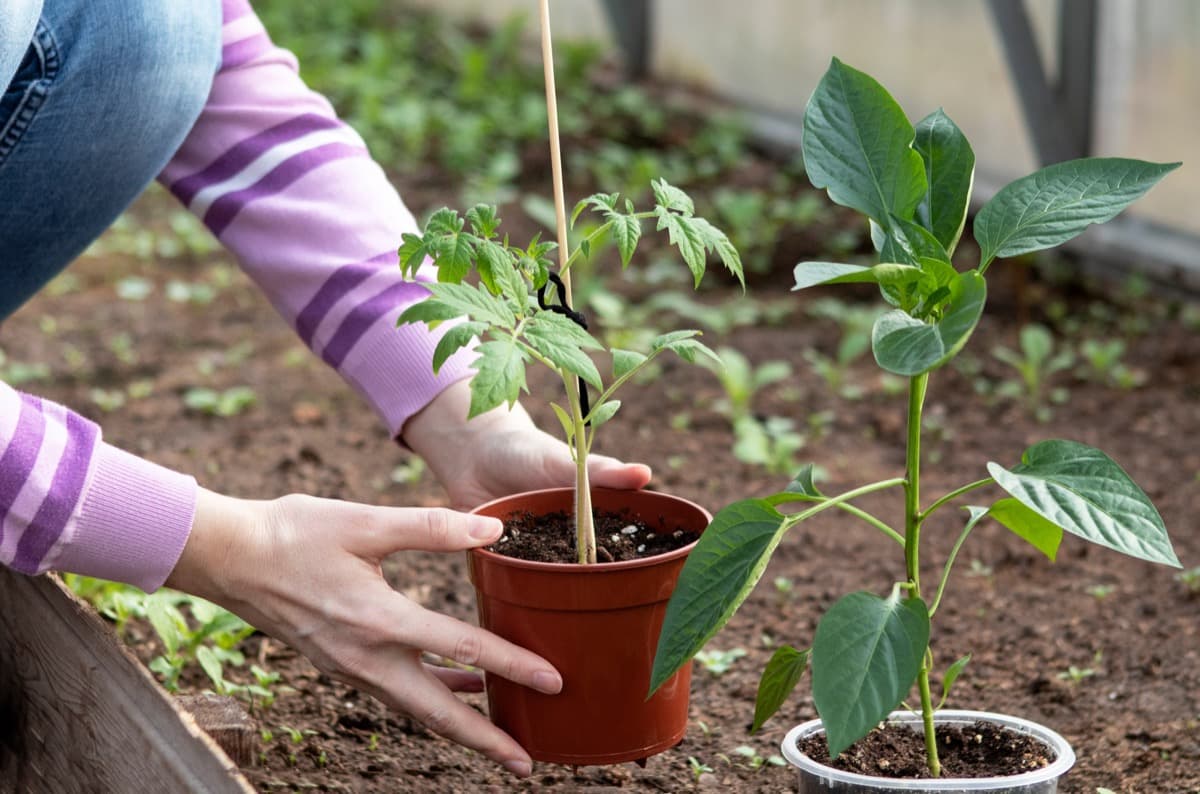
This is particularly important for Tomato plants which can grow quite large if not properly pruned or staked. With this combination of plants, you’ll have beautiful foliage, including purple-tinged leaves on some Pepper varieties alongside bright green leaves on your Tomato plant. Add bursts of color from Salvia blooms ranging in shades from reds through purples, all set against trailing vines courtesy of the Sweet Potato plant.
Lantana, Impatiens, and Coleus
Lantana, Impatiens, and Coleus are a beautiful combination of heat-loving plants that can add color and texture to any container. Lantanas come in vibrant shades of orange, yellow, and pink, while the Impatiens bring a pop of bright pink or white to the mix. The Coleus adds depth with its burgundy leaves.
These three plants complement each other well and prefer similar growing conditions such as full sun to part shade and moist soil. Their growth habits also work together nicely: Lantanas grow tall while Impatiens stay low and bushy, creating an interesting contrast. One thing to remember when planting this combination is that Lantanas can become quite large if not pruned regularly. However, with proper care, these plants will continue blooming throughout the summer months until fall arrives.
Agapanthus, Lantana, and Rosemary
Agapanthus, Lantana, and Rosemary are a combination of plants that can add color to your container garden. Agapanthus produces stunning flowers in shades of blue or white, while Lantana blooms in vibrant hues ranging from yellow to pink. Both these plants complement each other well as they grow at a similar pace. Rosemary adds an aromatic touch to the mix with its fragrant foliage.
In case you missed it: How to Grow and Care for Bleeding Heart Plant: A Beginners Guide
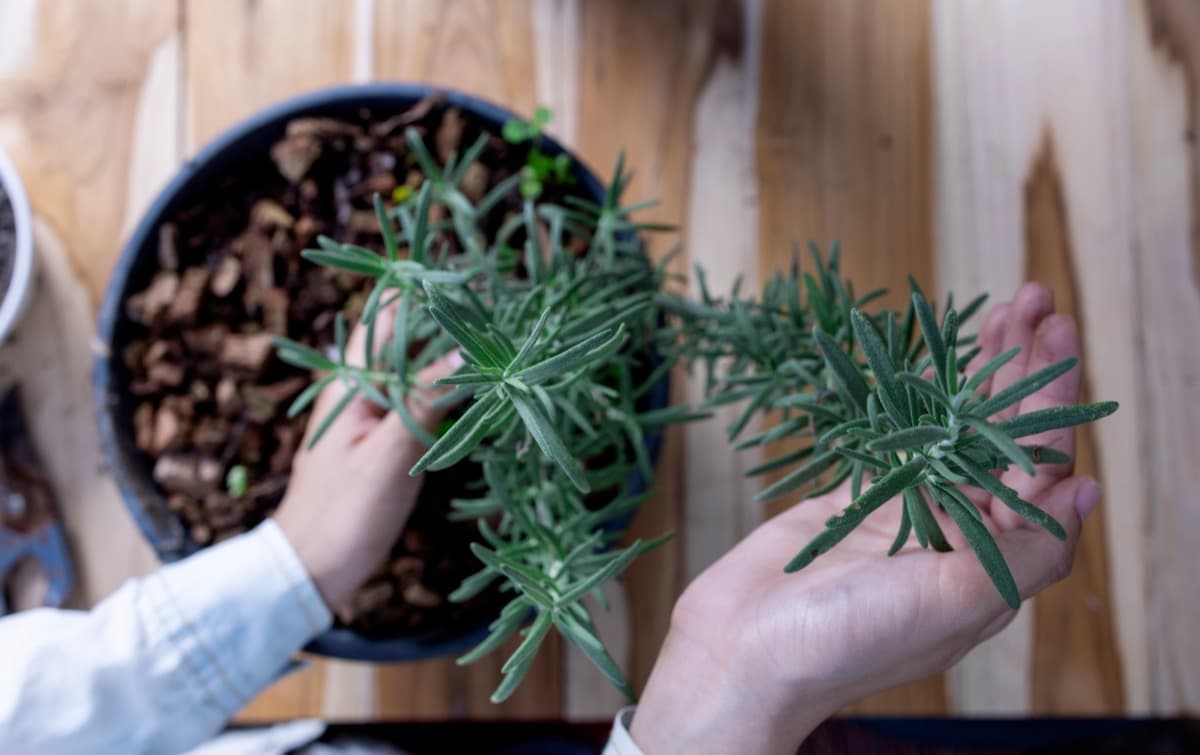
Its upright growth habit also provides height variation to the container. These heat-loving plants require full sun exposure for optimal growth. When planting this combo, use well-drained soil, as all three species prefer not to have wet feet. A potting mix containing perlite or sand will do the trick. Be mindful of their watering needs to ensure your Agapanthus, Lantana, and Rosemary thrive together.
Coleus, SunPatiens, and Creeping Jenny
Coleus is known for its vibrant foliage in shades of green, pink, purple, and red. Sunpatiens are the perfect choice if you’re looking for an easy-to-grow annual that thrives in full sun. They are available in white, pink, or magenta, complementing the Coleus’ bold leaves. Creeping Jenny is a low-growing plant with bright yellow-green leaves that spill over the sides of containers beautifully. As it’s a trailing plant, it creates a lovely backdrop to showcase your other plants.
Together these three plants create an eye-catching display while being incredibly easy to care for. Water them regularly; this trio grows best when kept consistently moist but not waterlogged soil. Whether grouped independently or combined with other plants like Lantana or Coleus, Sunpatiens, and Creeping Jenny, make excellent choices if you want stunning results without too much effort.
SunPatiens, Asparagus Fern, and Pothos
For a plant combination perfect for adding greenery to your outdoor space, consider pairing up SunPatiens, Asparagus Ferns, and Pothos. SunPatiens are known for their bright and vibrant blooms that can withstand summer heat while continuing to grow strong. They come in various colors, which make them perfect companions for other plants. Asparagus Ferns are lush and tropical-looking, with delicate fronds draping beautifully over container edges.
In case you missed it: How to Protect Plants from Heavy Rains and Water Damage: Tips, Ideas, and Techniques
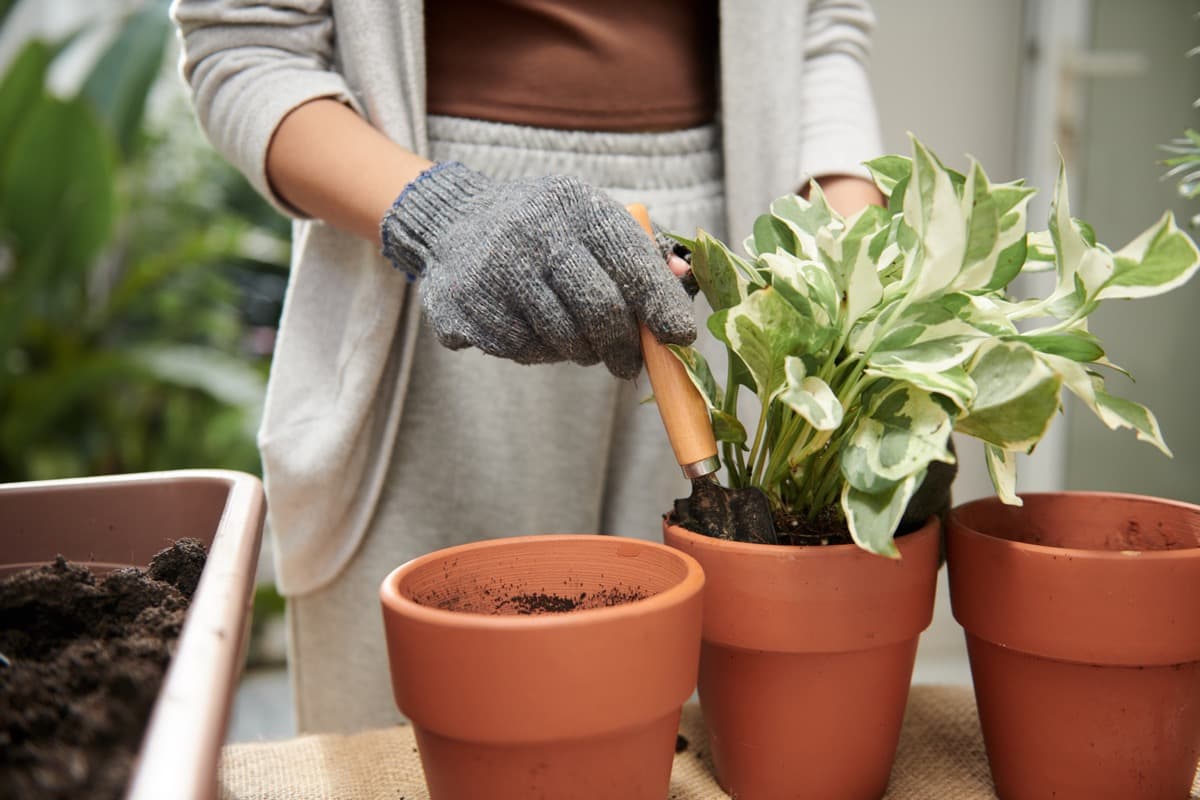
They add texture and interest to any arrangement. Pothos is an easy-to-care-for trailing plant that purifies the air around you. Its heart-shaped leaves in shades of green or variegated yellow-green fill out any container garden nicely. Together these three plants create a gorgeous display full of color, texture, and variety, ideal for people who love low-maintenance yet stunning garden arrangements.
Mandevilla and Papyrus
Mandevilla and Papyrus are two plants that work together beautifully in containers. The Mandevilla is a tropical vine with showy pink or red flowers that bloom throughout summer. On the other hand, Papyrus is an aquatic plant with tall stalks and grass-like leaves. Combining these plants creates a unique look that adds visual interest to any container garden. The bright blooms of the Mandevilla contrast perfectly with the towering green stalks of Papyrus, creating a dynamic display.
When planting this combination in a container, it’s important to ensure proper drainage, as both plants prefer moist soil but can’t tolerate standing water. To care for your Mandevilla and Papyrus combo, keep them well-watered and fertilized throughout the growing season. Deadhead spent blooms on the Mandevilla to encourage more flowering. If you live in colder climates where Mandevillas aren’t hardy year-round, bring them indoors during winter or treat them as annuals.
Basil, Rosemary, and Lemongrass
These three plants smell wonderful and complement each other quite nicely. Basil is a classic herb that’s easy to grow and adds a lovely scent and flavor to any dish. Rosemary is another popular herb with a delightful scent that can fill an entire room. Its woody aroma makes it perfect for savory roasts and stews.
Lemongrass has a refreshing citrusy fragrance that perfectly complements the earthiness of basil and Rosemary. When planting this trio together in containers, ensure they receive plenty of sunlight (at least six hours per day) and are planted in well-draining soil. With proper care, these herbs will thrive together all season long.
Geranium and Dichondra
Geranium and Dichondra is a fantastic heat-loving plant combination that will make your container garden look stunning. The contrasting colors of the flowers and leaves create a beautiful visual display that will catch anyone’s attention. Geraniums are popular for their vibrant blooms in red, pink, purple, and white shades. Geraniums are also easy to care for, making them an excellent choice for beginners.
In case you missed it: Expert Tips to Grow Fuller and Bushier Rosemary
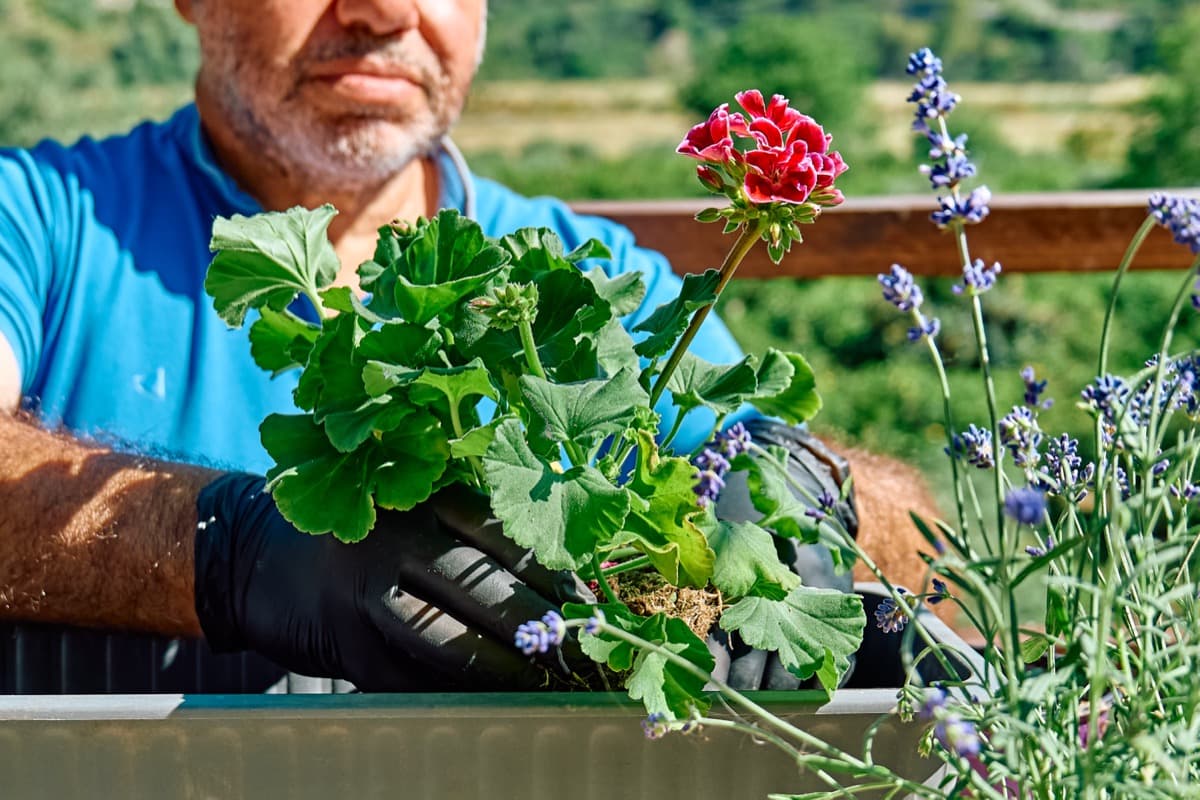
Dichondra is a trailing plant with attractive small round leaves with silver-green coloration. It grows well in hot weather conditions and requires minimal maintenance. Its foliage complements the bold geranium blooms excellently, adding texture and depth to your container arrangement. When planting Geraniums with Dichondra, use well-draining soil because both plants do not tolerate wet feet. Also, provide adequate fertilization during the growing season to maintain lush growth.
Geranium, Verbena, Marigold, and Dusty Miller
Geraniums add a pop of bright pink or red hues that perfectly complement the yellow blooms of marigolds. Meanwhile, Verbena adds a beautiful touch with its clusters of purple flowers. Dusty Miller’s silvery foliage acts as an anchor to tie everything together. One great thing about this plant combination is its ability to thrive in full sun conditions. They receive adequate water and soil drainage while planted in well-draining containers or pots with holes in them. In addition to their beauty and easy maintenance requirements, these plants attract pollinators such as bees and butterflies into your garden space which can benefit other nearby plants.
Scaevola, Nemesia, Salvia, and Verbena
Scaevola produces delicate blooms in shades of blue and purple. Nemesia adds a bright burst of color with its cheerful flowers in shades ranging from pink to orange. This compact plant is perfect for adding texture and dimension to your container garden. Salvia offers tall spikes of deep blue or purple flowers that add height and drama to your arrangement. This hardy plant thrives in hot weather and attracts pollinators like bees and butterflies.
Verbena provides a profusion of small flowers in shades of pink, red, purple, or white. Its spreading habit makes it an excellent choice for filling gaps between other plants while adding many colors. This quartet works brilliantly together, creating interest at various heights within the container, producing varying foliage colors while providing food sources for native fauna.
Conclusion
Plenty of fantastic heat-loving plant combinations can be used for containers. These plants not only add color and beauty to your outdoor space but also bring the benefits of fresh herbs or vegetables. You can create stunning container gardens that thrive in hot summer temperatures by combining textures, shapes, and colors. Remember to choose plants with similar growing requirements and arrange them according to their heights. Also, provide adequate water and fertilization as needed for each type of plant.
- Gardening Techniques in Planting Vegetables
- Where to Place Indoor Plants in Your Home
- How to Grow Tomatoes Organically at Home: A Comprehensive Guide
- Organic Gardening on a Budget: Low-Cost Methods and Materials
- Gongura Seed Germination and Planting Methods
- Cabbage Seed Germination and Selection
- Broccoli Seed Germination and Selection
- Asparagus Seed Germination and Variety Selection
- Seasonal Flower Gardening: Best Practices for Spring, Summer, Fall, and Winter
- How to Grow Hibiscus from Flower
- Plantation Ideas for Home Decoration: A Beginners Guide
- Flower Garden Designs and Layouts for Beginners
- Planting and Spacing Techniques in Papaya: A Beginner’s Guide
- Growing Gold: Essential Techniques for Planting Pineapples
- How to Make Kalanchoe Plant Bushy: Home Remedies and Solutions
- 11 Reasons Why Your Gardenia is Not Blooming: Home Remedies and Solutions
- Eco Elegance: The Guide to Designing a Drought-Tolerant Landscape
- Gardening on a Slope: Strategies for Hillside Landscaping
- Nourish and Flourish: Top Organic Mulches for Thriving House Plants
- Everything You Want to Know about Indian Mogra Flower: Discover Uses and Growing
- Green Thumb Success: Expert Tips for Cultivating Greenhouse Pumpkins All Year Round
- Maximize Growth & Flavor: The Ultimate Guide to Companion Planting in Herb Gardens
- How to Control Rhododendron Problems Naturally: Home Remedies and Organic Ways to Fix Them
- Natural Magic: The Remarkable Benefits of Cinnamon for Plants
- Best Steps to Revive Dying Tulip with Natural and Organic Treatment
- 10 Reasons Why Your Angel Trumpet is Not Blooming: Remedies and Treatment
- How to Fix Periwinkle Leaf and Flower-Related Problems: Natural Remedies and Solutions
- How to Fix Zinnias Leaf and Flower Problems: Discover Natural and Home Remedies
- Organic Steps to Induce Lemon Tree Flowers: A Comprehensive Guide
- Bloom Booster: Crafting the Perfect Homemade Bougainvillea Fertilizer
- Optimizing Growth: A Guide to Applying NPK Fertilizer for Potted Plants
- 10 Best Homemade Fertilizers for Rubber Plant: DIY Recipes and Application Method
- How to Boost Female Pumpkin Flowers: Effective Steps for More Flowers and High Yields
- Transform Your Indoor Garden: Top Benefits of Pink Salt for Houseplants
- 10 Best Homemade Fertilizers for Peacock Plants (Calathea): Easy DIY Guide
- Unlock Blooms: 9 Reasons Why Your Potted Chrysanthemum is Not Blooming